10 Types of Washers: Everything You Need to Know
Washers are thin plates used to distribute loads, prevent loosening, or seal joints. Uneven load distribution can cause fasteners to loosen, rust, or even break. Washers are usually made of metal or plastic
Now, let’s explore the types of washers, their uses, and how to choose the right one
What is a Washer?
A washer is a thin disk or ring placed between a nut and a bolt or beneath a screw head. It distributes load, prevents damage, resists vibration, and seals surfaces. Washers are essential in CNC machining, where tight tolerances, like ±0.01 mm, must be maintained for stability and safety. They are used across industries such as aerospace, automotive, medical, and electronics.
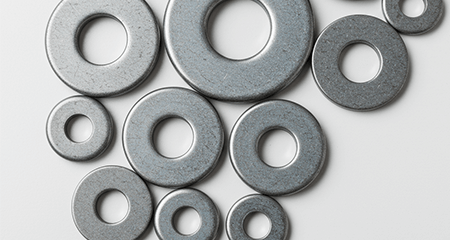
10 Types of Washers
Washers are crucial components in hardware and industrial applications, serving various purposes such as load distribution, surface protection, and fastening security. Below are the most widely used 10 types of washers, each tailored to specific needs and environments:
1. Plain Washers
Plain washers are the most common type used for general load distribution and surface protection. They are often CNC-machined to precise thickness for consistency in assembly.
Used where large clamping force is required, they help avoid damaging materials such as aluminum or plastic. Also known as hardware washers, they help improve torque without increasing surface pressure.
2. Torque Washer
A torque washer is designed with external tabs or ribs that lock into soft materials like wood or plastic. Often used with carriage bolt torque washer assemblies, they resist rotation and maintain clamping force. CNC stamping processes are often used to form their serrated shapes.
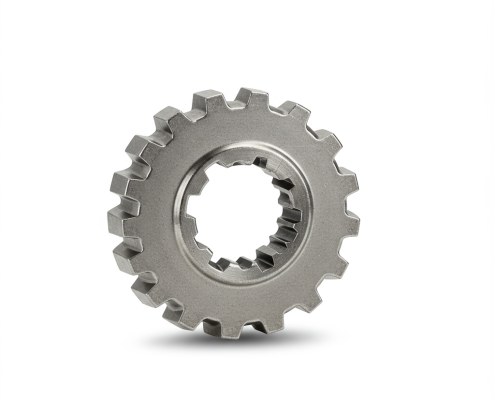
3. Flat Washer
The flat washer is a simple round disk with a hole in the center, used for load distribution. It’s frequently used in CNC assemblies requiring high flatness. They come in various materials and sizes including 2 inch inside diameter washers, 1 8 washer, 5/8 washer dimensions, and washer size chart specifications.
4. Fender Washer
Fender washers are characterized by their significantly larger outer diameter relative to the central hole. This design provides an extended surface area, making them ideal for applications requiring greater load distribution. They are commonly used with soft, thin, or brittle materials, such as wood, plastic, or fiberglass, to prevent pull-through and ensure a secure fastening.
Unlike standard flat washers, fender washers excel in spreading stress evenly across oversized holes or delicate surfaces, reducing the risk of material damage. They are widely utilized in automotive, construction, and DIY projects where additional support is necessary.
5. Countersunk Washer
The countersunk washer fits flush with countersunk screws for smooth finishes and load-bearing capacity. Available in various finishes like countersunk washer 1/2 diameter galvanized steel, they’re ideal in aerospace, optics, and electronics where clean surfaces are critical.
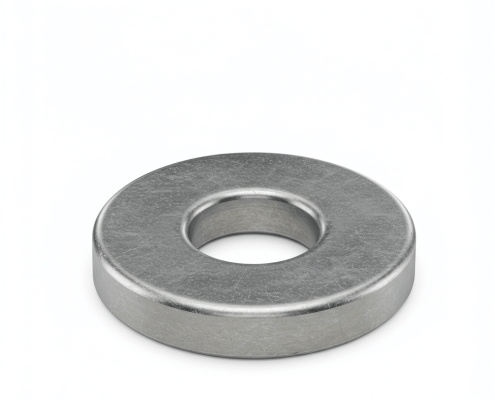
6. Shoulder Washer
Shoulder washers are also called insulating washers. They are used in electrical assemblies where the washer with screw prevents metal-to-metal contact. These are commonly made from nylon, PTFE, or PEEK, and are often CNC-machined to tight tolerances for high-performance assemblies.
7. Conical Washer
Conical washers, also known as Belleville washers, are engineered with a conical shape that allows them to function like a spring under load. Their design provides the ability to apply pre-load to a bolted assembly, ensuring that the connection remains secure even under dynamic conditions. These washers are particularly effective at absorbing shocks, vibrations, and thermal expansion, making them ideal for high-stress environments such as automotive, aerospace, and industrial machinery.
8. C-Washer
Crescent washers, commonly referred to as C-washers, feature a unique design with an open slot resembling the shape of the letter “C.” This slot enables the washer to be installed or removed without the need to fully disassemble the bolt or fastener it supports. This design makes C-washers particularly useful in applications requiring frequent adjustments, maintenance, or quick assembly and disassembly.
They are often utilized in heavy machinery, automotive systems, and industrial equipment where efficiency and accessibility are paramount. Additionally, they provide stability and load distribution while allowing for enhanced flexibility in dynamic setups.
9. Lock Washers
Lock washers prevent fasteners from loosening under vibration. Common types include split rings, internal teeth, and external teeth. CNC production of lock washers is essential in automotive and industrial machinery to ensure reliable assembly.
To clearly understand the assembly sequence, users often ask the installation order of nut washers, bolts, flat washers or lock washers first – usually, flat washers close to the surface, followed by lock washers under the nut or bolt.
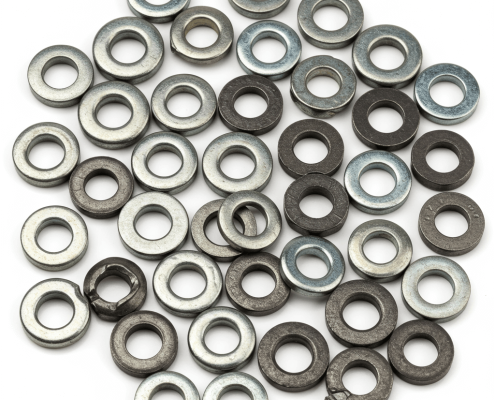
10. Spring Washers
Spring washers include wave washers and curved washers and are used in axial load applications. The comparison of spring washers and flat washers shows how spring washers provide resilience and how flat washers distribute the load. Spring washer combinations are used when components experience frequent load transfers or temperature changes.
Washers are essential components in fastening systems to increase stability, protect surfaces and prevent loosening. Each washer is designed to meet specific functional needs, from load distribution and insulation to shock absorption and quick installation. The following table summarizes the 10 most common types of washers, their unique functions and typical use cases:
| Washer Type | Description | Common Use Case |
|---|---|---|
| Plain Washer | Basic load distribution | General assemblies |
| Torque Washer | Tabs prevent rotation | Wood, plastic, carriage bolts |
| Flat Washer | Simple ring, load spreader | General CNC use |
| Fender Washer | Large diameter, stress spreader | Soft materials |
| Countersunk Washer | Flush finish with countersunk screw | Aerospace, electronics |
| Shoulder Washer | Insulating washer with sleeve | Electrical isolations |
| Conical Washer | Spring action under load | Shock absorption |
| C-Washer | Slot design for quick install | Maintenance-heavy environments |
| Lock Washer | Prevents loosening | Vibrating equipment |
| Spring Washer | Provides elasticity | Dynamic load conditions |
How to Choose the Right Washer?
Selecting the right washer is crucial for ensuring the durability and reliability of your assembly. Here are three key considerations:
1. Application Requirements
Determine the washer’s role in the assembly—whether it’s for load distribution, vibration resistance, insulation, or maintaining torque control. For dynamic applications, consider options like lock or spring washers, while for delicate surfaces, fender washers may be ideal.
2. Material and Compatibility
Match the washer material with the operating environment. For example, stainless steel offers corrosion resistance, brass is suitable for decorative or electrical use, and nylon works well in insulating or non-conductive settings. Compatibility with the bolt material is also essential to prevent galvanic corrosion.
3. Size and Standards
Ensure the washer dimensions match the bolt size and fit the application correctly. Refer to dimension charts or guides like the flat washer size chart or nut size guide. Additionally, verify whether SAE or USS standards are required based on the assembly’s specifications.
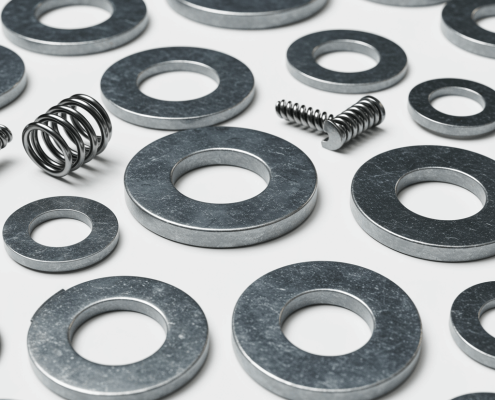
Washers Standards You Need to Know
Understanding washer standards is essential for ensuring proper fit and performance in your assemblies. Different standards define specifications for dimensions, materials, and usage, catering to various industries and regional requirements. Choosing the correct standard ensures compatibility and compliance with engineering practices. Below is a table summarizing key washer standards and their regions:
| Standard | Description | Region |
|---|---|---|
| ANSI B18.22.1 | Standard for plain washers | USA |
| DIN 125 | Metric flat washers | Germany/EU |
| ISO 7089 | International standard for flat washers | Global |
| SAE | Smaller OD washers | Automotive |
| USS | Larger OD washers | Industrial |
If you are unsure of the washer size standard, ask us. We can help you verify the hardware type and identify the fitment, such as choosing a size larger than 3/4″, understanding the dimensions of a 3/8″ washer, or choosing a 2″ washer for your application.
VMT for Your Washer Machining Needs
At VMT, we offer high-precision custom washer manufacturing services for both metals and engineered plastics. Whether you need screws and washers, washer hardware, or custom washer fasteners with CNC turning, milling, or EDM, we have your machining needs covered.
In Conclusion
While washers may seem small and simple, they play a vital role in ensuring the stability and service life of fastened components. Selecting the right washers requires careful consideration of factors such as material, size, standard, and application requirements.
Frequently Asked Questions About Washers
What is the Purpose of a Washer?
Washers are used to distribute the load of a threaded fastener, such as a screw or nut, reducing the risk of damage to the surface it is securing. They prevent loosening due to vibration or movement, protect surfaces from wear, and provide insulation in certain applications.
What Materials are Used to Make a Washer?
Washers can be made from materials such as steel, stainless steel, brass, aluminum, nylon, rubber, or plastic. The choice of material depends on the application, considering factors like load capacity, corrosion resistance, electrical insulation, and chemical compatibility.
What is the Size Chart for Different Washers?
Washer sizes are typically categorized by their inner diameter (ID), outer diameter (OD), and thickness. Standard sizes, such as M6, M8, or ¼ inch, align with the screw or bolt diameter. Specific size charts vary based on the type and regional standards (e.g., ISO, ANSI).
What are the Various Shapes of Washers?
Washers come in shapes like flat (circular), split (lock), beveled, square, and star (serrated).



